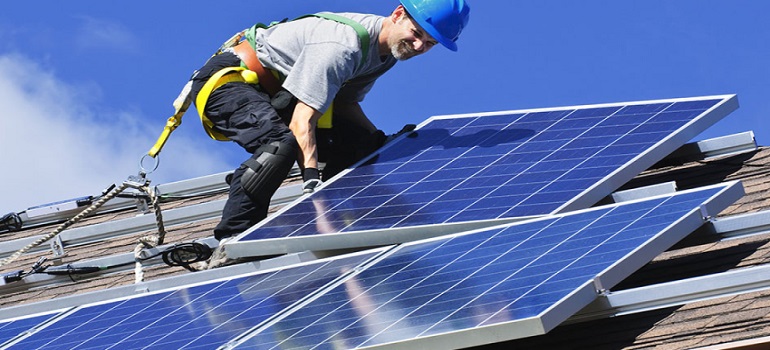
The Cabinet Committee on Economic Affairs chaired by the PM Modi has given its approval for the Phase-II of Grid Connected Rooftop Solar Programme for achieving cumulative capacity of 40 GW from Rooftop Solar (RTS) Projects by the year 2022.
The programme will be implemented with total central financial support of Rs.11,814 crore.
In the Phase-II Programme Central Financial Assistance (CFA) for the residential sector has been restructured with availability of 40% CFA for RTS systems up to 3 kW capacity and 20% for RTS system capacity beyond 3 kW and up to 10 kW.
For Group Housing Societies/Residential Welfare Associations (GHS/RAW), CFA will be limited to 20% for RTS plants for supply of power to common facilities, however, the capacity eligible for CFA for GHS/RAW will be limited to 10 kW per house with maximum total capacity upto 500 kWp, inclusive of RTS put in individual houses in the GHS/RWA.
CFA under residential category will be provided for 4000 MW capacity and the same will be provided on the basis of benchmark cost or tender cost, which is lower.
Central financial support will not be available for other category i.e., institutional, educational, social, government, commercial, industrial, etc.
Under Phase-II Programme, focus will be on increased involvement of DISCOMs. Performance based incentives will be provided to DISCOMs based on RTS capacity achieved in a financial year (i.e. 1st April to 31st March every year till the duration of the scheme) over and above the base capacity i.e. cumulative capacity achieved at the end of previous financial year.
The incentive to DISCOMs will be as follows:
| S.No. | Parameter | Incentive |
| 1 | For installed capacity achieved upto 10% over and above of installed base capacity within a financial year. | No incentive |
| 2 | For installed capacity achieved above 10% and up to 15% over and above of installed based capacity within a financial year | 5% of the applicable cost for capacity achieved above 10% of the installed base capacity |
| 3 | For installed capacity achieved beyond 15% over and above of installed based capacity within one financial year. | 5% of the applicable cost for capacity achieved above 10% and up to 15% of the installed base capacity PLUS 10% of the applicable cost for capacity achieved beyond 15% of the installed base capacity. |
DISCOMs and its local offices shall be the nodal points for implementation of the programme. Since, DISCOMs are required to incur additional expenditure for implementation of scheme in terms of additional man-power, creating infrastructure, capacity building, awareness, etc. It is approved to compensate them by providing performance linked incentives. These incentives will be provided to enable DISCOMs to create an enabling ecosystem for expeditious implementation of RTS programme in their area.
The incentives to the DISCOMs will be available only for initial capacity addition of 18,000 MW under the scheme.
The Programmes will have substantial environmental impact in terms of savings of CO2 emission. Considering average energy generation of 1.5 million units per MW, it is expected that addition of 38 GW solar rooftop plants under Phase-II by year 2022 will result in CO2 emission reduction of about 45.6 tonnes per year.
The programme has directed employment potential. Besides increasing self-employment the approval is likely to generate employment opportunity equivalent to 9.39 lakh job years for skilled and unskilled workers for addition of 38GW capacity under Phase-II of the scheme by the year 2022.
MORE TO READ:
Arvind to reduce carbon emissions by 30 percent with rooftopsolar installation
1279 MW Rooftop Solar capacity installed so far: RK Singh
Odisha to make rooftop solar panels mandatory for new buildings

